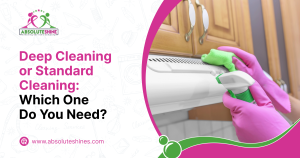Spring Cleaning Checklist!
There are few rites of spring more satisfying than the annual clean. For many people, however, the pleasure comes only after the work is finished. Your spring cleaning may never become effortless, but you can make the project more manageable — and even enjoyable. This checklist offers an overview of everything you need to know.
Throughout the House
The tips below outline basic techniques that will help you clean almost every surface (or object) in any room. The tasks are broken down by location, including outdoor spaces. The final page of this foldout focuses on window washing and upkeep, which is essential if you’re going to let the sun shine in on the bright days to come.
Wipe Walls and Ceilings: Use a vacuum to remove dust. Tackle stubborn surface grime, especially prevalent in kitchens, with a solvent-free degreaser (test it first in an inconspicuous area to ensure it won’t mar the surface).
Reseal Grout Lines: The cement-based material between wall, floor, and countertop tiles is extremely porous and stains easily. Protect it with a penetrating grout sealer; it’s best to apply it with a small foam brush.
Vacuum and Shampoo Rugs: Synthetic carpets and rugs with wa- terproof backings can be deep-cleaned with a rotary shampoo machine and a hot-water extraction machine. Rugs without backings, including Orientals, require professional cleaning, you can BOOK A SPRING CLEANING NOW with us (include inside window glass, inside oven, inside refrigerator , inside vacuum and Dust closet.)
Dust Books and Shelves: Take everything off the Shelves, and brush shelves and books with a feather dust- er. Use the dust-brush or crevice tool on a vacuum to reach into tight spots. Wipe the spines of leather-bound books with a clean, soft cloth.
Clean Upholstered Furnishings: Take cushions outside and gently beat them by hand to remove dust. If there are stains, check the pieces for care labels. Use a vacuum’s upholstery and crevice tools to clean under seat cushions.
Polish Metal Door and Window Hardware: Liquid polishes and polish-impregnated cloths work well for medi- um-tarnished surfaces; pastes and creams are for heavier work. If tarnish doesn’t come off, try a stronger product.
Dust Your Home Thoroughly: This includes hard-to-reach places, such as the tops of ceiling fans and window casings. Always work from the top of a room down, vacuuming the dust that settles on the floor. Avoid using dusting sprays.
Wax Wooden Furniture: Wipe surfaces with a soft cloth dampened with water and mild dishwashing liquid. Apply paste wax, such as Butch- er’s wax, a few feet at a time with a cotton rag folded into a square pad. Let wax dry; buff with a clean cloth.
Ensure Fire Safety: Change batteries in smoke detec- tors (this should be done twice a year), and make sure units are free of dust. Teach everyone in your household how to use a fire extinguisher, and review escape plans.
Wash Window Screens: Using warm water and a mild dishwashing liquid, scrub each screen with a brush; rinse thoroughly.
Clean Window Treatments: Many draperies and curtains are machine washable; check labels. Dry-clean fab- ric shades. Wipe wooden blinds with a damp cloth; warm water mixed with a mild dishwashing liquid is safe for metal and vinyl blinds.
Wax Non-Wood Floors: Vinyl and linoleum floors that have lost their shine should be waxed with a polish designed for these surfaces. Most stone and tile floors can be treated with either a paste or a liquid wax designed for the material.






